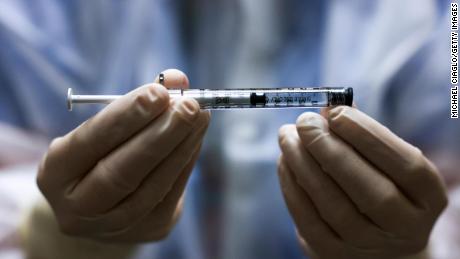New Covid-19 cases have stopped declining. Don’t repeat the mistakes of 2020 and start a new surge, Fauci says
But even though 7% of the US has now been fully vaccinated, new cases have stopped declining. They’re now hovering around 70,000 new cases a day, according to Johns Hopkins University.
That’s an improvement over the recent peak of 302,506 infections reported on January 2. But it’s still higher than last summer’s peak of around 67,000 per day.
Dr. Anthony Fauci said he fears some Americans are easing up on safety measures too soon — threatening the same post-dip surges we suffered in 2020.
“Just look historically at the … early spring of 2020 or the summer of 2020, when we started to pull back prematurely. We saw the rebound,” said Fauci, director of the National Institute of Allergy and Infectious Diseases.
A 1-dose vaccine could be available very soon
“It’s been such a challenge to get even a single dose to many people,” she said. “Signing up for a second one, keeping track of that, getting transportation, it’s just a huge barrier for many Americans and then of course in harder-to-reach places, including rural America, it’s just been a huge logistical challenge.”
Johnson & Johnson will start testing vaccine in children
“We will conduct several immunogenicity and safety studies in children from 17 years of age down to neonates,” Douoguih told a CDC advisory committee Sunday.
“The study in adolescents, we hope, will open next week. We are also anticipating a study in pregnant women in the second and third trimesters toward the end of March, early April,” Douoguih said.
Johnson & Johnson also plans to begin study in immunocompromised individuals in the third quarter of this year, Douoguih said.
The FDA’s emergency use authorization for the Johnson & Johnson vaccine is currently for use in adults 18 and older.
J&J vaccine will ‘dramatically’ increase vaccine availability
More than 23.6 million people have gotten both doses of a vaccine. That’s about 7.1% of the US population.
“The J&J vaccine, which is easier to transport and store… is going to dramatically increase our vaccine availability,” said Dr. Jonathan Reiner, a professor of medicine at George Washington University.
About 3.9 million doses will be available for ordering right away, said Lori Tremmel Freeman, CEO of the National Association of County and City Health Officials. That could add about 25% more Covid-19 vaccination capacity for states.
Utah Gov. Spencer Cox told CNN he expects the state will receive “several thousand doses” over the next few days.
“We expect shots in arms this coming week,” Cox said. “We know they have about 4 million doses on hand right now ready to go out. They’ll start shipping those out, we believe, on Monday. We should have those shots, we think, on Wednesday. And shots in arms on Thursday and Friday. That’s a big deal for our state and for Americans everywhere.”
West Virginia Gov. Jim Justice said Friday an emergency use authorization for the Johnson & Johnson vaccine would mean the state will receive about 15,000 more doses as soon as this week.
Now is not the time to ditch safety measures
But more than 63,800 Americans have died from Covid-19 just this month, according to Johns Hopkins.
“Over the last few weeks, cases and hospital admissions in the United States have been coming down since early January and deaths had been declining in the past week,” said Walensky, the CDC director.
“But the latest data suggest that these declines may be stalling, potentially leveling off at still a very high number. We at CDC consider this a very concerning shift in the trajectory.”
Experts have warned another Covid-19 surge could be just weeks away, this time fueled by variants of the virus. Particularly concerning is the highly contagious B.1.1.7 variant first identified in the UK, which the CDC estimates will soon be the predominant strain in the US.
“CDC has been sounding the alarm about the continued spread of variants in the United States, predicting that variants, such as the B.1.1.7 variant, which is thought to be about 50% more transmissible than the wild type strain, would become the predominant variant of Covid-19 by mid-March,” Walensky said.
“We may now be seeing the beginning effects of these variants in the most recent data.”
CNN’s Maggie Fox, Jen Christensen, Chuck Johnston, Jacqueline Howard, Nicholas Neville and Christopher Rios contributed to this report.
![]()











